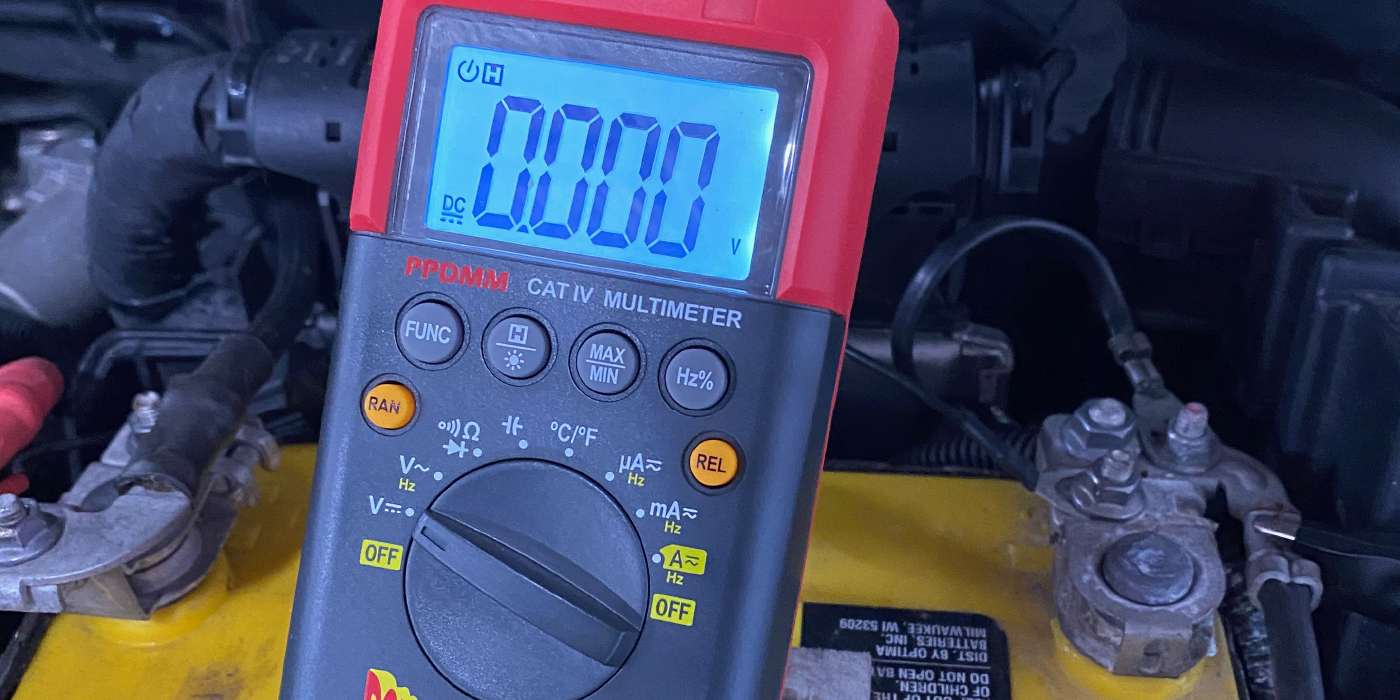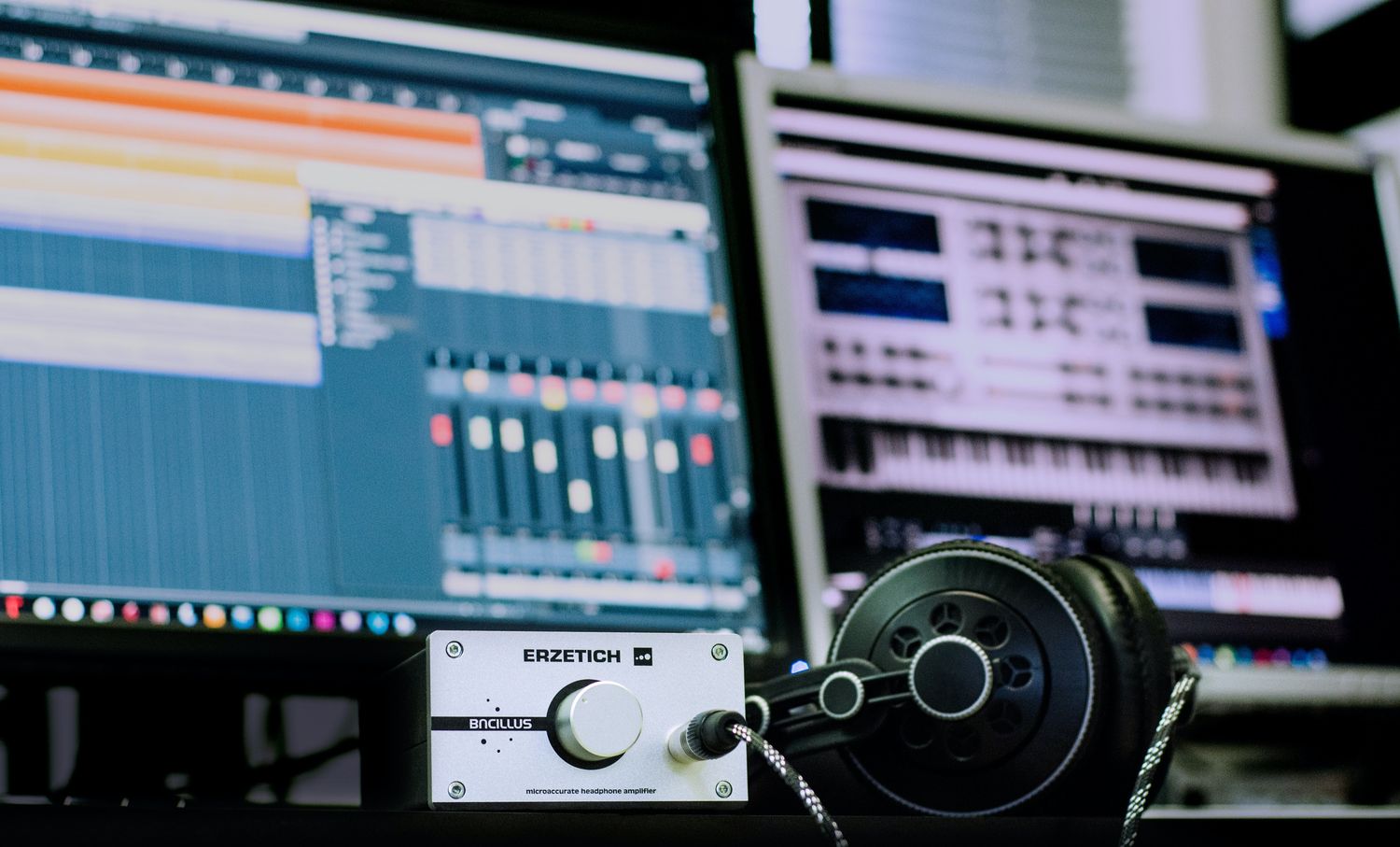Home>Production & Technology>Digital>How To Prevent Losing Music And Books Purchased In Digital Format


Digital
How To Prevent Losing Music And Books Purchased In Digital Format
Published: March 10, 2024
Learn how to protect your digital music and book purchases from loss with these effective prevention tips. Keep your digital content safe and secure.
(Many of the links in this article redirect to a specific reviewed product. Your purchase of these products through affiliate links helps to generate commission for AudioLover.com, at no extra cost. Learn more)
Table of Contents
Introduction
In today's digital age, the way we consume media has undergone a significant transformation. With the rise of digital music and e-books, many of us have embraced the convenience and accessibility of purchasing and storing our favorite tunes and literary works in digital formats. However, as we immerse ourselves in this digital realm, it's crucial to be mindful of the potential risks associated with digital rights management (DRM) and the possibility of losing access to our purchased content.
As technology continues to advance, the concept of ownership in the digital landscape has become increasingly complex. Unlike physical media, such as CDs and printed books, digital purchases are often subject to DRM, a set of access control technologies designed to protect the copyrights of digital media. While DRM serves a legitimate purpose in safeguarding intellectual property, it can also pose challenges for consumers, as it may restrict the ability to transfer and access purchased content across various devices and platforms.
The thought of losing access to a beloved music library or a collection of treasured e-books can be disheartening. Whether it's due to a change in licensing agreements, the discontinuation of a digital storefront, or technical malfunctions, the risk of losing access to digital purchases is a valid concern for many individuals. Therefore, it's essential to explore proactive measures to safeguard our digital content and mitigate the potential impact of unforeseen circumstances.
In the following sections, we will delve into practical strategies for preserving and protecting your digital music and e-book collections. From understanding the intricacies of DRM to implementing secure backup solutions and leveraging cloud storage services, we will equip you with the knowledge and tools necessary to safeguard your digital investments. By adopting these proactive measures, you can ensure that your cherished music and literary treasures remain accessible and secure for years to come.
Understanding Digital Rights Management (DRM)
Digital Rights Management (DRM) encompasses a set of technologies and protocols designed to safeguard the intellectual property rights of digital media, including music and e-books. DRM serves as a means of controlling access to digital content, ensuring that only authorized users can utilize and distribute the copyrighted material. This approach aims to prevent unauthorized duplication, distribution, and sharing of digital media, thereby protecting the interests of content creators and rights holders.
One of the fundamental aspects of DRM is its role in regulating the usage rights associated with digital purchases. When you acquire a digital music album or an e-book, the content is often encrypted or embedded with DRM mechanisms that dictate how you can interact with it. These usage rights may encompass restrictions on copying, sharing, and transferring the content to other devices or individuals. For instance, DRM may limit the number of devices on which you can play a specific music track or read an e-book, thereby influencing the portability and accessibility of your digital purchases.
It's important to note that the implementation of DRM can vary across different digital platforms and content providers. While some DRM systems may be relatively permissive, allowing seamless interoperability across devices and applications, others may impose more stringent restrictions, limiting the flexibility and portability of digital content. As a result, consumers may encounter challenges when attempting to transfer their purchased media between devices or migrate their collections to alternative platforms.
Furthermore, the longevity of DRM-protected content is contingent upon the sustainability of the underlying DRM infrastructure. In some cases, changes in licensing agreements, the discontinuation of digital storefronts, or the obsolescence of DRM technologies may lead to the loss of access to previously purchased content. This underscores the importance of understanding the implications of DRM and its potential impact on the long-term accessibility of your digital music and e-book collections.
By gaining a comprehensive understanding of DRM and its implications, you can make informed decisions regarding your digital purchases and take proactive measures to safeguard your valuable media assets. In the subsequent sections, we will explore strategies for backing up your digital purchases, utilizing cloud storage services, and maintaining the security of your devices to mitigate the risks associated with DRM and preserve the accessibility of your cherished music and literary collections.
Backing Up Your Digital Purchases
Safeguarding your digital music and e-book collections through comprehensive backup strategies is paramount in mitigating the potential risks associated with DRM and digital content accessibility. By implementing proactive backup measures, you can fortify the resilience of your digital purchases and ensure continued access to your cherished media assets. Here are essential strategies for backing up your digital content:
1. Local Backup Solutions
Consider creating local backups of your digital music and e-book libraries on external hard drives, network-attached storage (NAS) devices, or dedicated backup servers. By regularly duplicating your digital content onto these physical storage solutions, you can establish a robust safeguard against potential data loss due to hardware failures, system crashes, or accidental file deletions. Utilize reliable backup software to automate the backup process and streamline the management of your digital media archives.
2. Cloud-Based Backup Services
Leverage cloud-based backup services to store copies of your digital music and e-book collections in secure, off-site data centers. Leading cloud storage providers offer scalable and cost-effective solutions for safeguarding your digital content, providing redundancy and disaster recovery capabilities. By entrusting your backups to reputable cloud services, you can mitigate the risks associated with local storage failures and enhance the accessibility of your media assets across various devices and locations.
3. DRM-Free Archives
Where feasible, prioritize the acquisition of DRM-free digital music and e-books from reputable platforms that offer content in open and interoperable formats. DRM-free media grants you greater flexibility in managing and backing up your digital collections, as it eliminates the constraints imposed by DRM mechanisms. Additionally, consider converting DRM-protected content into DRM-free formats using authorized tools and services, enabling you to create resilient and portable archives of your digital purchases.
4. Version Control and Metadata Preservation
When backing up your digital music and e-book libraries, pay attention to preserving essential metadata, such as album artwork, author information, and publication details. Furthermore, consider implementing version control mechanisms to maintain historical revisions of your digital content, allowing you to revert to previous states in the event of inadvertent modifications or data corruption. By upholding metadata integrity and versioning practices, you can enrich the archival quality of your digital media backups.
By integrating these proactive backup strategies into your digital content management practices, you can fortify the resilience of your music and literary collections and mitigate the potential impact of DRM-related challenges. Embracing a multi-faceted approach to backing up your digital purchases empowers you to preserve the accessibility and longevity of your cherished media assets, ensuring that you can continue to enjoy your favorite tunes and literary works with confidence and peace of mind.
Using Cloud Storage Services
Leveraging cloud storage services presents a compelling solution for safeguarding your digital music and e-book collections. Cloud storage offers a versatile and resilient platform for storing and accessing your media assets, mitigating the risks associated with local storage limitations and hardware failures. By entrusting your digital backups to reputable cloud providers, you can benefit from a range of advantages that enhance the accessibility and security of your cherished content.
One of the primary benefits of utilizing cloud storage services is the inherent redundancy and disaster recovery capabilities they offer. Leading cloud providers maintain geographically distributed data centers, ensuring that your digital backups are replicated across multiple locations. This redundancy minimizes the risk of data loss due to hardware malfunctions, natural disasters, or localized outages, thereby fortifying the resilience of your digital media archives.
Furthermore, cloud storage services facilitate seamless accessibility to your digital content across various devices and locations. By uploading your music and e-book collections to the cloud, you can effortlessly synchronize and access your media assets from smartphones, tablets, computers, and other internet-enabled devices. This versatility empowers you to enjoy your favorite tunes and literary works on the go, without being tethered to a specific physical storage device.
In addition to robust data redundancy and accessibility, cloud storage providers prioritize the implementation of advanced security measures to safeguard your digital backups. Leading cloud platforms employ encryption protocols, access controls, and multi-factor authentication mechanisms to protect your stored content from unauthorized access and data breaches. By leveraging the security features offered by reputable cloud services, you can instill confidence in the privacy and integrity of your digital music and e-book collections.
Moreover, cloud storage services often offer scalable and cost-effective storage plans, allowing you to tailor your backup solutions to accommodate the evolving needs of your media archives. Whether you seek to store a modest collection of e-books or a vast library of music albums, cloud providers offer flexible storage options that align with your specific requirements. This scalability empowers you to expand your digital backups as your collection grows, ensuring that your media assets remain protected and accessible in the long term.
By embracing cloud storage services as a cornerstone of your digital content management strategy, you can fortify the resilience and accessibility of your music and literary collections. The inherent redundancy, accessibility, security, and scalability offered by reputable cloud providers position cloud storage as a compelling solution for preserving the longevity and accessibility of your cherished digital purchases. Embracing cloud storage services empowers you to navigate the complexities of DRM and digital content accessibility with confidence, ensuring that your beloved media assets remain secure and accessible for years to come.
Keeping Your Devices Secure
Ensuring the security of your devices is paramount in safeguarding the accessibility and integrity of your digital music and e-book collections. By implementing robust security measures across your smartphones, tablets, computers, and other digital devices, you can fortify the resilience of your media assets and mitigate the risks associated with unauthorized access and data breaches.
1. Device Encryption and Authentication
Employ device-level encryption to protect the data stored on your smartphones, tablets, and computers. By enabling encryption, you can safeguard your digital music and e-book collections from unauthorized access in the event of device theft or loss. Additionally, leverage strong authentication methods, such as biometric recognition and complex passcodes, to restrict access to your devices and prevent unauthorized individuals from compromising your media assets.
2. Software Updates and Security Patches
Regularly update the operating systems and applications on your devices to mitigate vulnerabilities and security flaws. Operating system and software updates often include critical security patches that address known exploits and vulnerabilities, enhancing the resilience of your devices against potential cyber threats. By staying current with software updates, you can bolster the security posture of your devices and safeguard your digital content from emerging security risks.
3. Anti-Malware and Firewall Protection
Install reputable anti-malware software and enable firewall protection on your devices to defend against malicious software, phishing attempts, and unauthorized network intrusions. Anti-malware solutions offer real-time scanning and threat detection capabilities, mitigating the risks of malware infections that could compromise your digital music and e-book collections. Additionally, firewall protection fortifies the perimeter security of your devices, regulating incoming and outgoing network traffic to prevent unauthorized access and data exfiltration.
4. Secure Data Backup and Recovery
Implement secure backup solutions for your devices, ensuring that your digital music and e-book collections are included in routine backup processes. By maintaining comprehensive backups of your devices, you can mitigate the impact of data loss due to device failures, theft, or security incidents. Leverage encrypted backup storage solutions and cloud-based backup services to fortify the resilience of your digital content and facilitate seamless data recovery in the event of unforeseen circumstances.
5. Device Access Controls and Permissions
Leverage device access controls and permissions to restrict user privileges and access to your digital media assets. Implement user accounts with appropriate access levels, ensuring that sensitive content is safeguarded from unauthorized modifications or deletions. By enforcing granular access controls, you can fortify the integrity of your music and literary collections, mitigating the risks of inadvertent data alterations or unauthorized access.
By prioritizing the security of your devices and implementing these proactive measures, you can fortify the resilience of your digital music and e-book collections, ensuring that your cherished media assets remain secure and accessible in the face of evolving cyber threats and security challenges.
Conclusion
In the dynamic landscape of digital media consumption, the preservation and accessibility of our cherished music and literary collections are paramount. As we navigate the intricacies of digital rights management (DRM) and the potential risks associated with digital content accessibility, it becomes evident that proactive measures are essential to safeguard our digital purchases.
By comprehensively understanding DRM and its implications, individuals can make informed decisions regarding their digital acquisitions and take proactive steps to mitigate the risks of losing access to their media assets. Embracing a multi-faceted approach to backing up digital purchases, leveraging cloud storage services, and prioritizing device security empowers individuals to fortify the resilience and accessibility of their music and literary collections.
The proactive implementation of local and cloud-based backup solutions, coupled with the acquisition of DRM-free content and meticulous metadata preservation, enriches the archival quality of digital media backups. By entrusting digital backups to reputable cloud storage providers, individuals benefit from inherent redundancy, disaster recovery capabilities, and enhanced accessibility across various devices and locations.
Furthermore, prioritizing the security of digital devices through encryption, authentication, software updates, anti-malware protection, and access controls fortifies the integrity and accessibility of digital music and e-book collections. These measures mitigate the risks of unauthorized access, data breaches, and device failures, ensuring that individuals can continue to enjoy their beloved media assets with confidence and peace of mind.
In conclusion, by embracing proactive strategies for preserving and protecting digital music and e-book collections, individuals can navigate the complexities of DRM and digital content accessibility with resilience and confidence. The proactive measures outlined in this article empower individuals to safeguard their cherished media assets, ensuring that their music and literary collections remain secure, accessible, and enjoyable for years to come.











